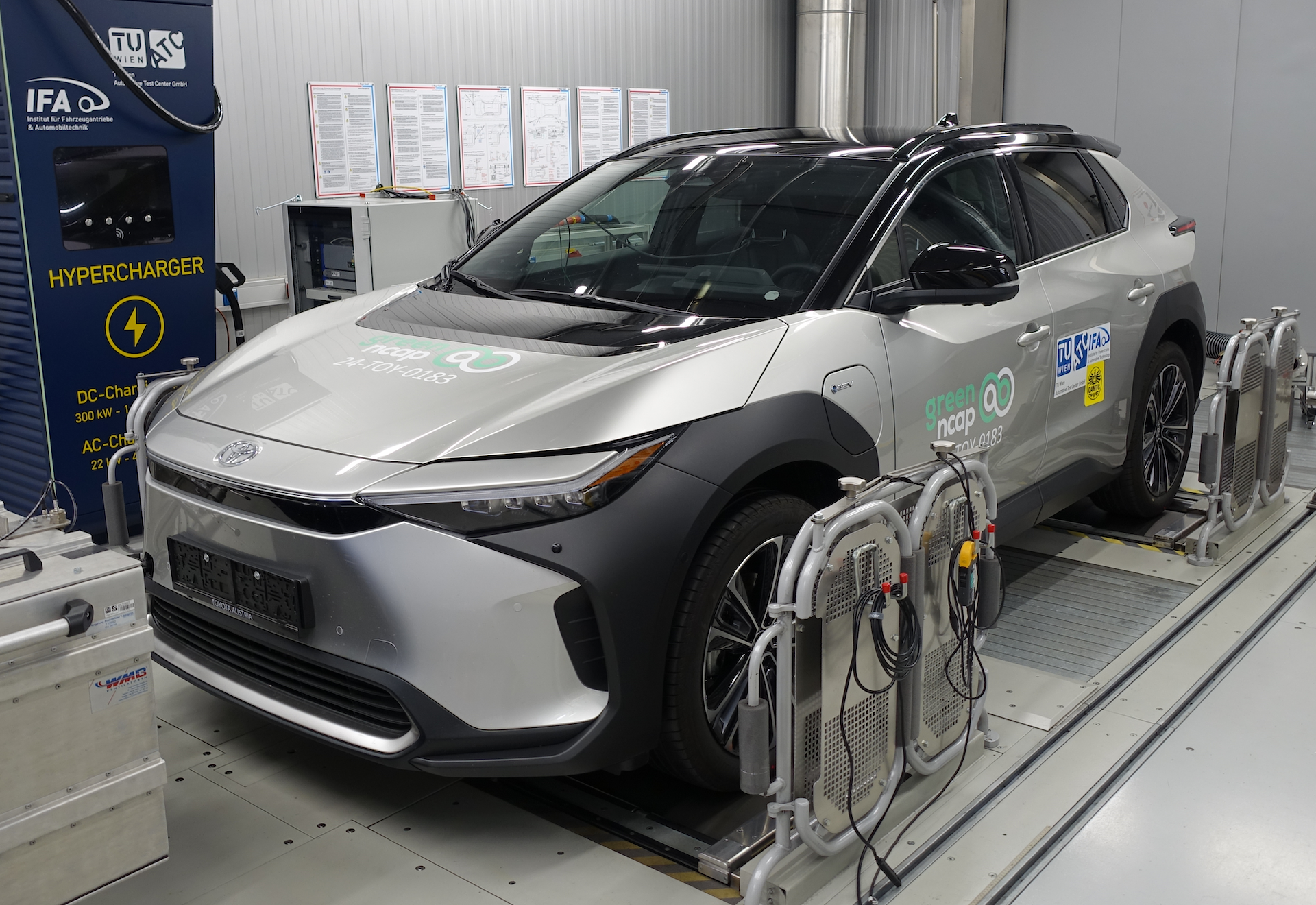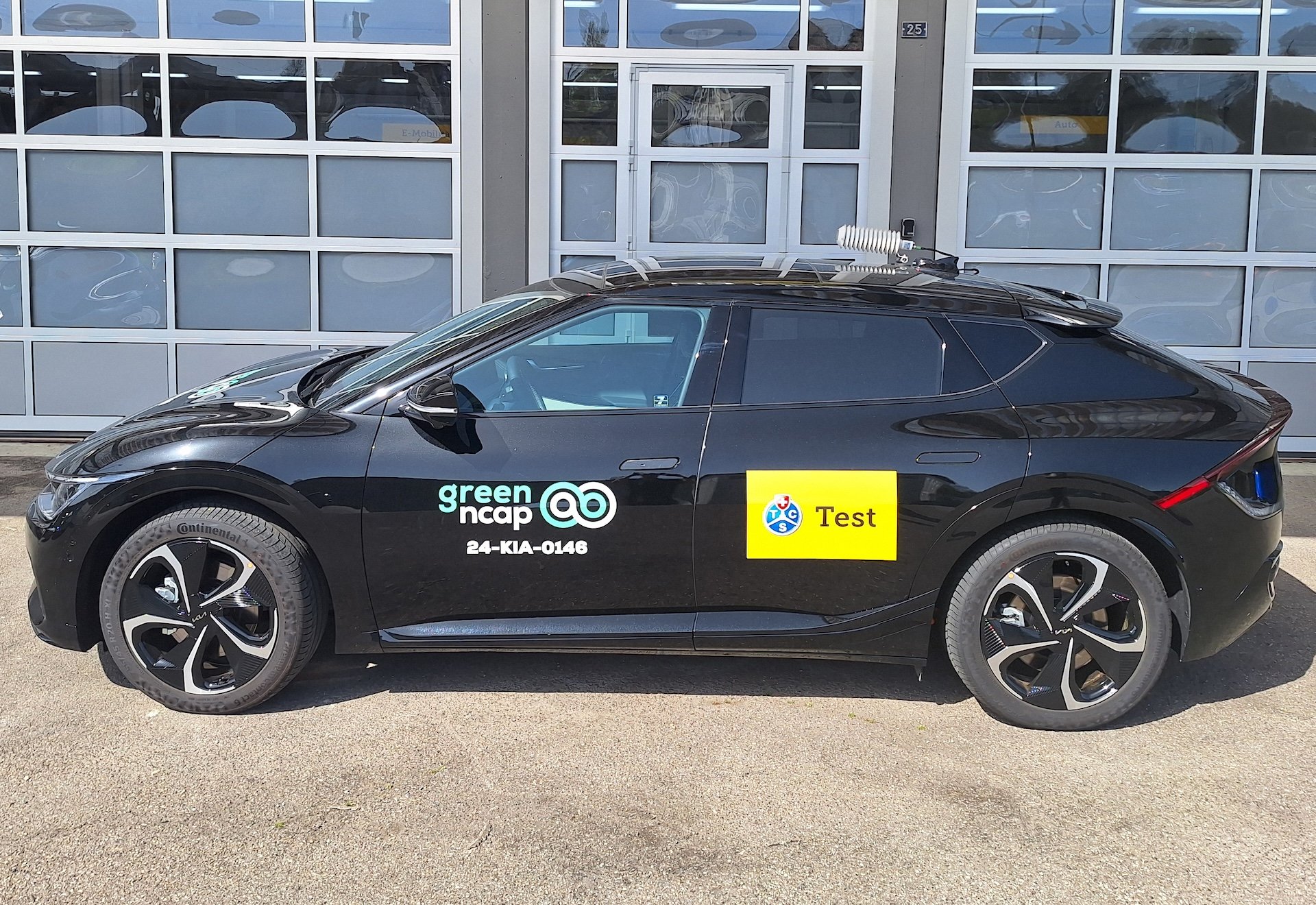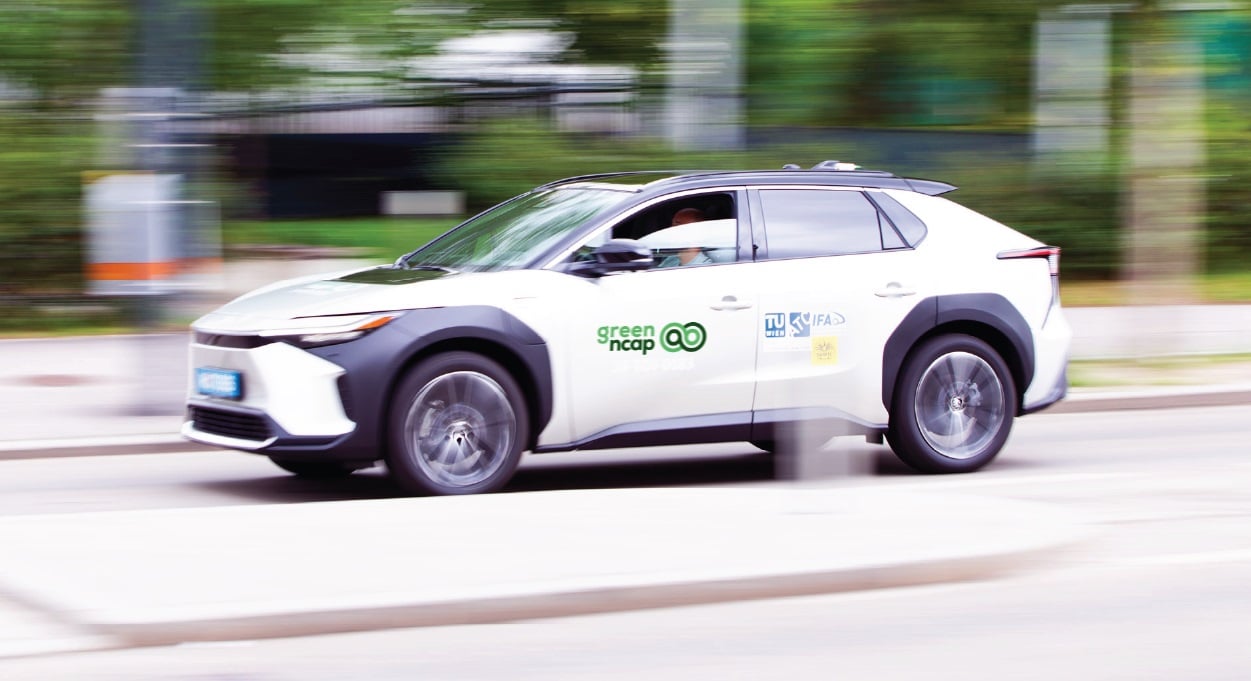Sign up for our popular daily email to catch all the latest EV news!
Green NCAP‘s latest ratings reveal that electric vehicles (EVs) are consistently achieving top scores for environmental performance, while internal combustion engine (ICE) vehicles lag behind. The results highlight the urgent need for more sustainable innovations in ICE technology to meet the growing demand for cleaner transportation.
Key Highlights:
- Toyota bZ4X achieves 5 Green Stars with 97% Average Score.
- Kia EV6 earns 5 Green Stars, matching other EVs.
- BYD SEAL U secures 5 Green Stars, showing excellent environmental credentials.
- Peugeot 308 diesel scores 3 Green Stars; needs improvement in NOx emissions.
- Volkswagen Taigo petrol also gets 3 Green Stars with good pollutant control.
- Kia Ceed petrol scores 2 Green Stars; faces challenges with emissions.
- Green NCAP emphasizes need for ICE innovation in emissions control and efficiency.
In the latest round of assessments, Green NCAP evaluated a range of vehicles, including the electric BYD SEAL U, Kia EV6, Toyota bZ4X, and the internal combustion engine models Kia Ceed, Peugeot 308, and Volkswagen Taigo. The all-electric vehicles in the lineup achieved the maximum score of five stars, underscoring the superior environmental performance of EVs.

The Toyota bZ4X, the company’s first dedicated electric SUV, led the pack with an almost perfect result of 5 Green Stars and an Average Score of 97%. The SUV delivered impressive scores across all environmental categories, particularly in efficiency with a grid-to-battery-output result of 90.4%, slightly above the average of Green NCAP’s tested EV fleet. With no tailpipe emissions, the bZ4X presents a minimal environmental impact, making it a desirable choice for consumers seeking eco-friendly family vehicles.
Similarly, the 2024 Kia EV6 earned 5 Green Stars and an Average Score of 94%. Based on the Hyundai Group’s Electric-Global Modular Platform (E-GMP), this sleek electric hatchback shares its platform with the Hyundai IONIQ 5 and the Genesis GV60. Although its energy demand figures in the Highway and Cold Ambient Tests were higher than those of the Hyundai IONIQ 6 tested in 2024, the EV6 still maintains remarkable efficiency. It shares the same grid-to-battery output efficiency as the Toyota bZ4X, resulting in minimized energy losses from its charger and battery.
The BYD SEAL U, a fully electric large SUV, also achieved 5 Green Stars and an Average Score of 93%. Its excellent environmental credentials are highlighted by zero tailpipe emissions, good energy efficiency, and minimal greenhouse gas emissions. However, Green NCAP recommends that BYD improve the efficiency of its onboard charger, as measurements indicated only around 87% of the energy withdrawn from the plug is available for vehicle use, compared to the usual 89% with 11 kW charging.

In contrast, ICE vehicles face significant challenges. The Peugeot 308, equipped with a BlueHDi diesel engine, obtained a mid-range rating of 3 Green Stars and an Average Score of 55%. While it scores well in Clean Air with decent control of pollutant output, improvements are needed, especially regarding NOx emissions during short urban trips with a cold engine start and in congested conditions.
The Volkswagen Taigo, a light compact crossover with a petrol engine, also garnered 3 Green Stars and an Average Score of 53%. It demonstrated good gaseous pollutant levels and lower particle emissions compared to many competitors. However, its energy efficiency score of 5.2/10 is considered good but not outstanding.
The Kia Ceed, a popular petrol-powered hatchback, scored only 2 Green Stars and an Average Score of 37%, making it the lowest scorer in 2024 so far. The vehicle struggles with greenhouse gas emissions, notably CO2, and manages pollutants only marginally. It fails to maintain exhaust aftertreatment robustness in the Highway Test, with carbon monoxide (CO) emissions far exceeding Green NCAP’s thresholds, resulting in a total Highway Test score set to zero.
To achieve higher scores in future assessments, especially with planned protocol tightening in 2025, manufacturers of ICE vehicles will need to adopt advanced emissions control technologies, improve fuel efficiency, and explore enhanced hybridization. Reducing vehicle mass and designing for less aerodynamic resistance are also viable routes for lowering environmental impact.
“It’s true that electric vehicles consistently outperform internal combustion engine cars in our assessments, particularly in the areas of air quality and greenhouse gas emissions. However, ICE vehicles still have a role to play in the immediate future given their continued appeal. Advanced emissions control systems, hybrid technology, and alternative fuels adoption are all promising developments. A change in consumers’ preferences away from large cars can also contribute to more sustainable mobility. Green NCAP will continue to push for cleaner, more efficient vehicle technologies and advocate for a broader transformation in the way consumers think about and use transportation.” – Dr. Aleksandar Damyanov, Green NCAP Technical Manager
About Green NCAP
Green NCAP is an independent initiative promoting the development of cars that are clean, energy-efficient, and cause minimal harm to the environment. It employs a broad range of tests to address the flaws in approval tests and, through consumer information, rewards manufacturers whose vehicles exceed minimum requirements and offer excellent, robust, real-world performance. Green NCAP believes that consumers need to be adequately informed about the energy consumption and related greenhouse gas emissions of their vehicle choices.
Sign up for our popular daily email to catch all the latest EV news!


